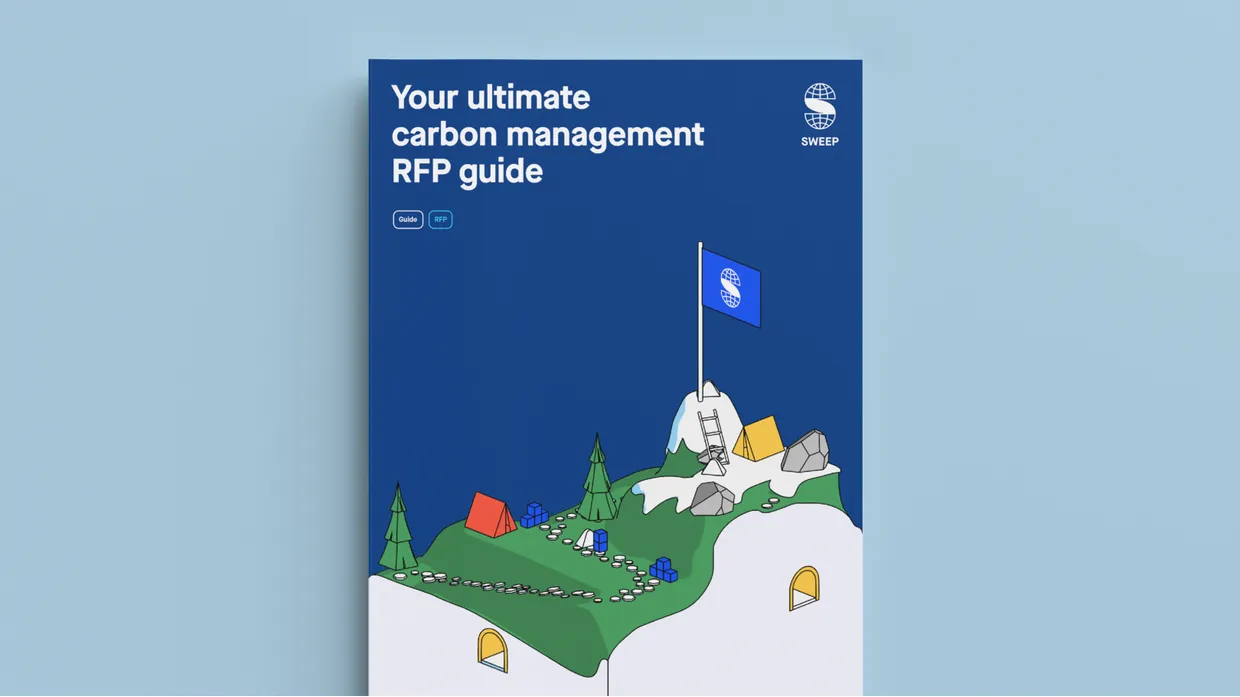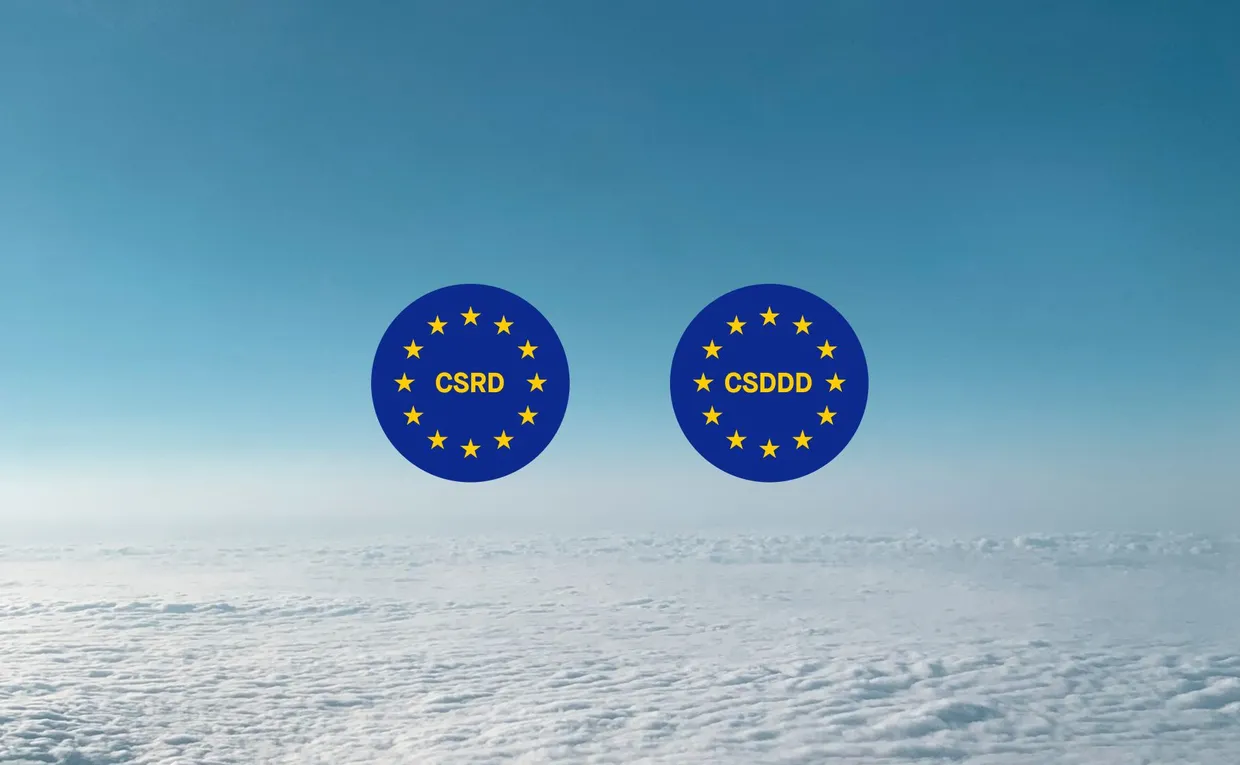If your company is looking for a carbon management software provider, your first step would be to create a Request for Proposal (RFP) that outlines your specific needs and goals. A carbon management RFP is a formal document that requires careful consideration of your company’s unique circumstances and objectives.
This guide is designed to help you navigate the process of writing a climate RFP, including the key criteria that you need to consider, a list of the top questions that you should be asking, and the types of answers that you might expect.
Define your business objectives
When defining your carbon management RFP, start by setting key business objectives. Ask yourself: What are your main goals for your decarbonization journey?”
-
Are you looking to decarbonize a specific part of your business?
-
Do you care about setting a credible decarbonization roadmap?
-
Do you want to comply with the latest climate regulations?
-
Or perhaps you want to build trust with your investors and regulators by providing them with greater transparency around your carbon footprint measurement?
Deciding on your key reduction objectives will give you greater clarity about your specific needs when it comes to your carbon management provider.
Establish your business scope
The scope of your company’s operations, its size, and structure, will also influence your choice of provider. Here are a few of the key factors to consider.
-
Company size and structure: This includes your offices, any subsidiaries or franchises, and importantly – your supply chain. It might be helpful to map each of these key elements and how they interact with each other.
-
Jurisdiction and regulatory requirements: Follow climate regulations in each of the jurisdictions in which you operate. Here is a useful summary of some of the top climate legislation to be aware of.
-
Carbon reduction targets: You can use Science-Based Targets (SBTs) as a guide to set ambitious and achievable objectives that are aligned with the Paris Agreement. SBTs are emission reduction targets that are consistent with limiting global warming to 1.5°C above pre-industrial levels.
It’s worth setting separate targets for your Scope 1, 2, and 3 emissions, either absolute or intensity-based.
Target types
Absolute emission targets
Absolute emission targets refer to a specific amount of emissions that your firm commits to reducing over a given period of time. This target is based on the total amount of emissions and isn’t dependent on the growth of your business, or the profits made in a given year.
Example: Company A pledges to reduce the emissions generated by employee travel by 40% by 2030.
Intensity-based emission targets
Intensity-based emission targets refer to a reduction in emissions per unit of economic activity. They allow firms to set emission reduction targets while at the same time accounting for growth or business changes (such as mergers or acquisitions).
Example: Company B pledges a 20% emission reduction per $1M turnover.
Define your carbon management RFP requirements
The next step is to use all of the above information to establish your carbon management criteria. These should include the below.
Scope
It’s important to determine which scopes you want to measure because different providers may offer different levels of support and expertise in each scope. For example, if you have an extensive supply chain and you want to get a comprehensive view of your complete carbon footprint, you’ll want to choose a provider with extensive expertise in measuring Scope 3 emissions.
Scopes – A quick recap
Scope 1 emissions are direct emissions from sources that are owned or controlled by your firm, such as emissions from office buildings or company vehicles.
Scope 2 emissions are indirect emissions from the generation of purchased electricity, heat, or steam that your firm uses.
Scope 3 emissions are all other indirect emissions that aren’t included in Scope 2. It includes 15 categories of emissions, such as purchased goods and services, capital goods, employee commuting, business travel, waste generated in operations, and use of sold products.
The three Scopes were established by the Greenhouse Gas (GHG) Protocol to help governments and business leaders to understand, quantify, and manage their emissions.
Data collection and aggregation
To accurately measure and manage carbon emissions, you may need to integrate with other applications. It’s important to determine if this is necessary and if so, which integrations are needed.
Identifying key data challenges
Every company has different challenges when it comes to collecting and managing data. Usually, Scope 3 poses the greatest difficulties – as it involves aggregating data from multiple suppliers, each with a varying level of data maturity. It’s important to determine where the data pain points are in your network – to ensure that your prospective provider can support you with these.
Alignment with decarbonization initiatives
Your organization may also want to align with sustainability initiatives such as the Science Based Targets Initiative (SBTi) or Partnership for Carbon Accounting Financials (PCAF). This can help you set ambitious and credible carbon reduction targets and demonstrate your commitment to sustainability.
Decide who to involve
Carbon management involves a range of different teams in your organization from sustainability to procurement, which is why it’s important that you get your Climate Action Dream Team together to work on this. You might choose to include:
Your Chief Sustainability Officer and sustainability team – They may already have experience of working with carbon management tools or have ideas about which solutions would be most useful to your organization.
Your finance team – They can provide valuable insights into the financial implications of carbon reduction projects and help ensure that cost estimates align with your financial planning and budget.
Your procurement team – As they manage vendor relationships and contracts, they can help identify potential carbon management providers and evaluate climate proposals.
Your IT team – They can provide technical expertise when it comes to systems integration, platform security, and scalability.
Top 26 questions to ask in a carbon management RFP
We’ve put together a handy list of the 26 top questions to cover in your carbon management RFP. These focus on the key areas of:
-
Emission factors and measurement methodologies
-
Emission data management and integration
-
Addressing the challenges of value chain emissions measurement
-
Setting targets and showing progress against them
-
Data and information security issues
Your carbon management RFP – the blueprint for impactful climate action
Writing an impactful request for proposal is a critical step in your decarbonization journey. Remember that the key is to spend time to really understand your company’s goals when it comes to climate action, and then to establish your unique requirements around these goals. We hope that this handy resource will support you in crafting a comprehensive request document that attracts the right providers, clearly outlines your expectations, and ultimately helps you select the best partner for managing your carbon emissions.
Download your RFP guide and template
Other useful resources from Sweep
Below are a few links to other relevant resources to support you:



